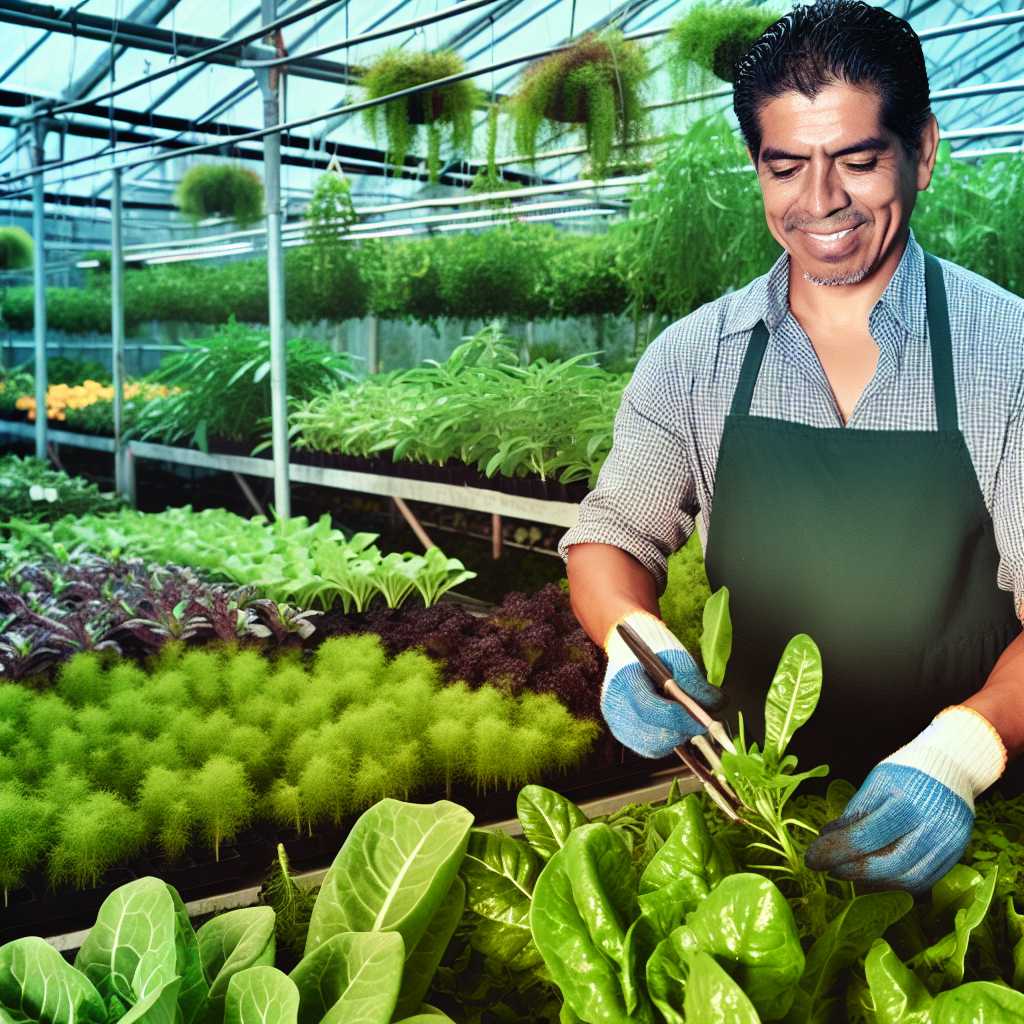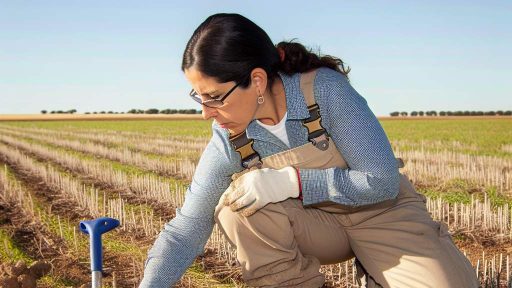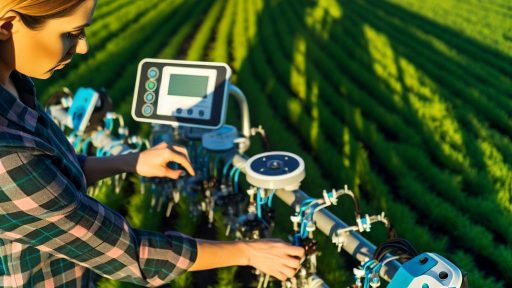Introduction to Greenhouse Cultivation
Greenhouse cultivation offers a controlled environment for growing crops.
This method enhances plant growth by managing temperature, humidity, and light.
Consequently, it provides a year-round growing season for organic crops.
Farmers can grow a variety of crops regardless of outdoor conditions.
Greenhouses minimize the risk of pests and diseases significantly.
In addition, they help protect crops from extreme weather events.
Benefits of Greenhouse Cultivation for Organic Agriculture
Greenhouse cultivation boosts yield potential and crop quality.
Through controlled conditions, plants experience optimal growth rates.
Moreover, farmers can implement efficient irrigation systems in greenhouses.
This conserves water and reduces wastage during crop production.
Extended Growing Seasons
Greenhouses allow farmers to extend growing seasons significantly.
This capability increases the variety of crops produced throughout the year.
Consequently, growers can rely on steadier income from their harvests.
Reduced Chemical Inputs
Organic farmers favor greenhouse cultivation due to lower chemical requirements.
It enables them to use fewer pesticides and fertilizers.
Transform Your Agribusiness
Unlock your farm's potential with expert advice tailored to your needs. Get actionable steps that drive real results.
Get StartedInstead, they can focus on natural pest control methods.
Increased Market Opportunities
Greenhouse-grown crops can meet consumer demand for local organic products.
Farmers can supply fresh produce during off-seasons.
Thus, this enhances their competitiveness in local markets.
Challenges of Greenhouse Cultivation
Despite its advantages, greenhouse cultivation presents challenges.
The initial investment can be high for constructing a greenhouse.
Additionally, ongoing operational costs may also accumulate significantly.
Technical Knowledge Requirements
Successful greenhouse management requires specialized technical knowledge.
Farmers must understand plant biology and climate control systems.
This knowledge ensures optimal growing conditions are maintained.
Energy Consumption Concerns
Greenhouses can consume significant energy for heating and cooling.
Farmers should explore sustainable energy sources to mitigate these costs.
Renewable energy options can provide effective solutions for energy needs.
Types of Greenhouses Suitable for Organic Crop Production
Passive Solar Greenhouses
Passive solar greenhouses utilize sunlight for heating and light.
They effectively reduce the need for additional energy sources.
These structures trap heat during the day and release it at night.
Consequently, plants benefit from stable temperatures year-round.
Active Solar Greenhouses
Active solar greenhouses employ fans and pumps to circulate heat and air.
These systems ensure more precise temperature control.
As a result, they enhance growing conditions for organic crops.
Additionally, they can generate supplemental energy for other uses.
Polycarbonate Greenhouses
Polycarbonate greenhouses feature durable, insulated panels.
These panels provide excellent thermal performance.
They are resistant to impacts, making them suitable for harsh weather.
Showcase Your Farming Business
Publish your professional farming services profile on our blog for a one-time fee of $200 and reach a dedicated audience of farmers and agribusiness owners.
Publish Your ProfileMoreover, polycarbonate allows sufficient light penetration for plant growth.
Hoop Houses
Hoop houses consist of a simple frame covered by plastic sheeting.
They are affordable and quick to construct.
This type of greenhouse enables earlier planting and extended growing seasons.
Despite their simplicity, they can effectively protect plants from cold weather.
Glass Greenhouses
Glass greenhouses are aesthetically pleasing and elegant.
They offer excellent light transmission, crucial for plant health.
These structures allow for efficient ventilation as well.
However, they tend to have higher initial construction costs compared to other types.
Geodesic Dome Greenhouses
Geodesic dome greenhouses utilize a unique, spherical design.
This shape maximizes light exposure while minimizing material use.
They distribute heat more evenly throughout the structure.
Furthermore, their design can withstand various weather conditions effectively.
Considerations for Choosing a Greenhouse
When selecting a greenhouse, consider your climate and location.
Assess the crops you plan to grow along with their specific needs.
Budget constraints also play a significant role in the decision-making process.
Finally, evaluate the long-term sustainability of the chosen structure.
Essential Equipment and Technology for Effective Greenhouse Management
Climate Control Systems
Climate control systems maintain optimal growing conditions in greenhouses.
These systems regulate temperature, humidity, and ventilation.
Furthermore, automated controls enhance efficiency and reduce labor costs.
Advanced sensors monitor environmental conditions in real time.
These sensors allow growers to respond quickly to changes.
Lighting Solutions
Lighting plays a crucial role in greenhouse cultivation.
Supplemental lighting extends the growing season and promotes healthy growth.
LED lights are increasingly popular due to their energy efficiency.
Growers can customize light spectra to suit different crops.
This customization enhances growth rates and yields significantly.
Irrigation Systems
Efficient irrigation is vital for successful greenhouse farming.
Drip irrigation systems deliver water directly to the plant roots.
This method minimizes water waste and promotes healthy root development.
Additionally, automated irrigation systems simplify daily management.
These systems ensure crops receive consistent moisture levels.
Soil and Nutrient Management Tools
Quality soil and nutrient management tools enhance crop production.
Growers should regularly test soil nutrient levels and pH.
Soil amendment tools help optimize conditions for plant growth.
Moreover, hydroponic systems enable soilless cultivation.
This method allows precise control over nutrient delivery.
Pest and Disease Control Equipment
Pest management is essential in a greenhouse environment.
Integrated Pest Management (IPM) combines different control strategies.
Biological controls, such as beneficial insects, reduce pest populations.
Showcase Your Farming Business
Publish your professional farming services profile on our blog for a one-time fee of $200 and reach a dedicated audience of farmers and agribusiness owners.
Publish Your ProfileRegular monitoring and scouting for pests help prevent outbreaks.
Additionally, sanitation tools help maintain a clean growing environment.
Monitoring and Data Collection Technology
Data collection technology aids in effective greenhouse management.
Growers can use software applications to track crop growth and health.
Monitoring systems provide insights into environmental variables.
These insights inform decision-making and improve crop performance.
Furthermore, data analytics can optimize greenhouse operations over time.
Learn More: The Business Case For Integrating Data-Driven Farming Into Property Ventures
Soil Health and Organic Growing Media in Greenhouses
The Importance of Soil Health
Soil health is crucial for successful organic crop production.
Healthy soil supports robust plant growth and enhances nutrient availability.
Additionally, it fosters beneficial microbial activity.
This activity contributes to natural pest control and disease resistance.
Maintaining soil health also helps in retaining moisture, which reduces water usage.
Components of Organic Growing Media
Organic growing media combines various natural materials.
Common components include peat moss, compost, and coconut coir.
These materials improve soil structure and aeration.
Organic matter enriches the soil with essential nutrients.
Furthermore, using diverse components promotes microbial diversity.
Strategies for Enhancing Soil Health
Implementing crop rotation is key for maintaining nutrient balance.
This practice prevents nutrient depletion and disrupts pest cycles.
Utilizing cover crops can significantly improve soil organic matter.
Cover crops also prevent erosion and suppress weeds.
Regular soil testing helps monitor nutrient levels and pH balance.
Benefits of Organic Media in Greenhouses
Organic growing media provides numerous advantages for greenhouse cultivation.
It enhances moisture retention, which is vital in a controlled environment.
This type of media supports healthy root development and plant growth.
Additionally, it decreases the reliance on synthetic fertilizers.
Using organic media aligns with sustainable farming practices.
Best Practices for Managing Organic Growing Media
Regularly amend growing media with compost to boost nutrient levels.
Monitor moisture levels to prevent over-saturation or drought stress.
Implementing a grit layer can aid in drainage, especially in pots.
Rotate crops in greenhouse beds to prevent soilborne diseases.
Finally, integrate organic mulches to enhance water retention and weed control.
You Might Also Like: The Role of Weed Control in Sustainable Land Development
Crop Selection and Rotation Strategies for Organic Greenhouse Farming
Choosing the Right Crops
Selecting suitable crops is crucial for organic greenhouse farming.
Consider factors such as climate, soil type, and market demand.
Popular choices include tomatoes, peppers, and lettuce.
Moreover, herbs like basil and cilantro thrive in greenhouse settings.
These crops often respond well to organic fertilizers and pest management.
It’s also important to consider the growing season and harvest times.
Showcase Your Farming Business
Publish your professional farming services profile on our blog for a one-time fee of $200 and reach a dedicated audience of farmers and agribusiness owners.
Publish Your ProfileImplementing Crop Rotation
Crop rotation enhances soil health and prevents pest build-up.
By alternating crops, farmers can improve nutrient cycling in the soil.
For example, planting legumes can enrich the soil with nitrogen.
In contrast, followed by leafy greens can utilize those nutrients effectively.
Furthermore, incorporating cover crops can protect and nourish the soil during off-seasons.
Planning for Disease Resistance
Disease management is essential for healthy crops.
Selecting resistant varieties can minimize fungal and bacterial infections.
Rotation not only affects pests but also various crop diseases.
For instance, rotating brassicas can reduce the likelihood of clubroot disease.
In addition, maintaining good airflow can thwart fungal issues.
Observing Local Trends
Stay informed about local market trends and consumer preferences.
Community-supported agriculture (CSA) can provide insight into popular crops.
Furthermore, attending local farmers’ markets helps gauge consumer interest.
Network with other organic growers to share valuable knowledge.
Local agricultural extension offices often provide resources and support.
Adapting to Climate Impacts
Understand how climate change affects crop selection and yield.
For instance, warmer temperatures can shift planting times.
Subsequently, irrigation strategies may need to adapt as well.
Monitoring climate data can help in making informed decisions.
Additionally, consider integrating climate-resilient crops into your rotation.
Learn More: Fertilizer Management for Sustainable Wheat Farming in the USA
Pest and Disease Management: Organic Strategies for Greenhouses
Understanding Organic Pest Management
Effective pest management is crucial in organic greenhouse cultivation.
Organic strategies focus on prevention and biological control methods.
Farmers often use beneficial insects to guard crops against pests.
Encouraging natural predators like ladybugs can significantly reduce aphid populations.
Additionally, introducing parasitic wasps can help manage whiteflies effectively.
Promoting Plant Health
Healthy plants resist pests and diseases more effectively.
Growing diverse plant varieties improves resilience against infestations.
Cover crops enhance soil health and attract beneficial insects.
Crop rotation can disrupt pest life cycles and promote soil nutrients.
Furthermore, regular monitoring helps identify potential issues early.
Organic Chemical Controls
When necessary, organic pesticides offer alternatives to synthetic options.
Neem oil is widely recognized for its efficacy against various pests.
Pyrethrin, derived from chrysanthemum flowers, can also be effective.
Farmers should apply these treatments judiciously to minimize harm.
Implementing Physical Barriers
Physical barriers serve as a first line of defense against pests.
Row covers can protect crops from insects while allowing light and moisture in.
Sticky traps can help monitor and control flying pests.
Maintaining tidy greenhouse conditions reduces pest habitats significantly.
Conducting Soil Health Management
Healthy soil provides robust plants that can withstand better against pests.
Showcase Your Farming Business
Publish your professional farming services profile on our blog for a one-time fee of $200 and reach a dedicated audience of farmers and agribusiness owners.
Publish Your ProfileUsing compost enhances soil fertility and microbial activity.
Regular soil tests help farmers manage nutrient levels effectively.
Additionally, cover cropping improves soil structure and organic matter.
Integrating Cultural Practices
Cultural practices play a vital role in pest management strategies.
Practices such as proper spacing reduce humidity, discouraging fungal diseases.
Watering plants at the base can help minimize leaf wetness.
Removing debris and dead plants reduces habitat for pests.
Furthermore, timing planting to avoid peak pest populations ensures better crop yields.
See Related Content: Greenhouse Cultivation for Reducing Water Usage in Agriculture

Water Management and Irrigation Techniques in Greenhouse Cultivation
Importance of Effective Water Management
Effective water management increases crop yields significantly.
It helps maintain optimal plant health and growth rates.
Also, it conserves resources and minimizes waste.
Understanding Irrigation Systems
Irrigation systems play a crucial role in greenhouse cultivation.
They deliver water directly to plant roots efficiently.
Moreover, several systems are available like drip and overhead irrigation.
Drip Irrigation
Drip irrigation is highly efficient and conserves water.
This system reduces evaporation and runoff significantly.
It delivers water slowly and directly to the root zone.
Overhead Irrigation
Overhead systems distribute water uniformly across plant surfaces.
They can cover large areas, which is beneficial for commercial operations.
However, they may cause more water loss to evaporation.
Monitoring Soil Moisture
Regular monitoring of soil moisture is essential.
This practice helps prevent both overwatering and underwatering.
Utilizing soil moisture sensors can provide real-time data.
Water Quality Considerations
Water quality impacts plant health significantly.
It is essential to test water for contaminants regularly.
Using filtered or treated water can prevent diseases and nutrient imbalances.
Implementing Rainwater Harvesting
Rainwater harvesting is an excellent sustainable practice.
This method collects and stores rainwater for irrigation use.
It reduces dependency on municipal water sources.
Applying Mulch for Moisture Retention
Mulching helps retain soil moisture effectively.
Organic materials such as straw or wood chips are commonly used.
This technique also suppresses weed growth.
Utilizing Technology for Efficient Irrigation
Modern technologies enhance irrigation management significantly.
Automation allows for precise water application based on needs.
Smart irrigation systems can adjust schedules based on weather forecasts.
Training and Knowledge for Growers
Growers must be trained in advanced water management techniques.
Workshops and courses are valuable resources for education.
Networking with other growers can also provide insights and solutions.
Regulatory Requirements and Certifications for Organic Greenhouse Operations
Overview of Organic Regulations
Organic greenhouse operations must comply with specific regulations.
Showcase Your Farming Business
Publish your professional farming services profile on our blog for a one-time fee of $200 and reach a dedicated audience of farmers and agribusiness owners.
Publish Your ProfileThese regulations are set forth by the United States Department of Agriculture (USDA).
Farmers need to understand the National Organic Program (NOP).
This program outlines the standards for organic production.
Compliance with these standards is essential for certification.
Certification Process
The certification process involves several steps.
First, producers must submit an application to a certifying agent.
Next, they must provide a detailed organic system plan.
This plan outlines their farming practices.
Moreover, they need to maintain detailed records of all activities.
Documenting Inputs and Practices
Documentation is crucial for organic certification.
Farmers must record all inputs used in greenhouse cultivation.
This includes seeds, fertilizers, and pest control measures.
It is vital to use only approved organic materials.
Additionally, producers must keep track of their crop rotations and practices.
Inspection Requirements
Inspections are a mandatory part of the certification process.
At least once a year, a certifying agent will visit the operation.
During this visit, they will verify adherence to organic practices.
Inspectors will review records and examine the greenhouse setup.
Any non-compliance issues identified may affect certification.
Maintaining Certification
Once certified, producers must maintain their status.
This includes annual renewal of the certification.
Producers are required to continue following organic standards.
Failure to comply may result in the loss of certification.
Additionally, they must keep their records up to date between inspections.
Benefits of Organic Certification
Cultivating certified organic crops offers significant advantages.
Organic certification can lead to higher market prices for crops.
Consumers increasingly prefer organic products.
This preference boosts demand for organically grown vegetables and fruits.
Moreover, certified producers gain access to new markets.
State-Specific Regulations
In addition to federal regulations, states may have their own requirements.
Producers must familiarize themselves with local regulations.
Some states offer additional certifications or support programs.
Checking with local agricultural departments can provide essential information.
This local understanding can enhance compliance efforts.
Resources for Organic Growers
Several resources are available for organic greenhouse growers.
The USDA offers guidelines and support for producers.
Additionally, many cooperative extension offices provide assistance.
Local organic associations also offer networking opportunities.
These resources can help navigate the certification process successfully.
Case Studies: Successful Organic Greenhouse Farms in the USA
Introduction to Success Stories
Several farms across the USA demonstrate the benefits of organic greenhouse cultivation.
Showcase Your Farming Business
Publish your professional farming services profile on our blog for a one-time fee of $200 and reach a dedicated audience of farmers and agribusiness owners.
Publish Your ProfileThese success stories highlight innovative practices and sustainable techniques.
Green Acres Organic Farm
Located in California, Green Acres stands out for its diverse crop production.
This farm specializes in heirloom tomatoes and organic herbs.
Its use of integrated pest management contributes to sustainable practices.
Farm owner Angela Rivera embraces technology for efficient operations.
She utilizes climate control systems to optimize plant growth.
Innovative Practices
The farm employs hydroponics to maximize space and resources.
This method allows for higher yield with less water usage.
Moreover, Green Acres partners with local restaurants for fresh produce supply.
Sunny Fields Greenhouses
Sunny Fields, based in Florida, showcases another successful model.
This farm uses renewable energy sources to power its operations.
Solar panels on the roofs significantly reduce energy costs.
Owner Mark Thompson focuses on organic strawberries and peppers.
Sustainable Farming Techniques
Cover cropping is a key technique used at Sunny Fields.
It improves soil health and prevents erosion.
The farm also practices crop rotation to enhance biodiversity.
The Urban Greenhouse Project
The Urban Greenhouse Project in New York City targets urban food deserts.
This initiative uses vertical farming techniques to maximize limited space.
They grow greens and microgreens year-round in a controlled environment.
Community Engagement
Education programs are an essential part of the project’s mission.
They engage local schools and community groups in farming activities.
This approach fosters awareness about sustainable food sources.
Mountain View Organic Farm
Located in Colorado, Mountain View showcases resilience in organic farming.
This farm survives harsh weather conditions using advanced greenhouse technologies.
They cultivate organic carrots and leafy greens throughout the year.
Technology in Farming
Temperature sensors help maintain optimal growing conditions.
Mountain View utilizes rainwater harvesting systems for irrigation.
This reduces dependence on city water supplies while conserving resources.
Successful Practices in Organic Greenhouse Farming
These case studies illustrate successful practices in organic greenhouse farming.
Each farm contributes uniquely to the organic farming movement.
Their stories inspire new farmers to adopt sustainable practices.




